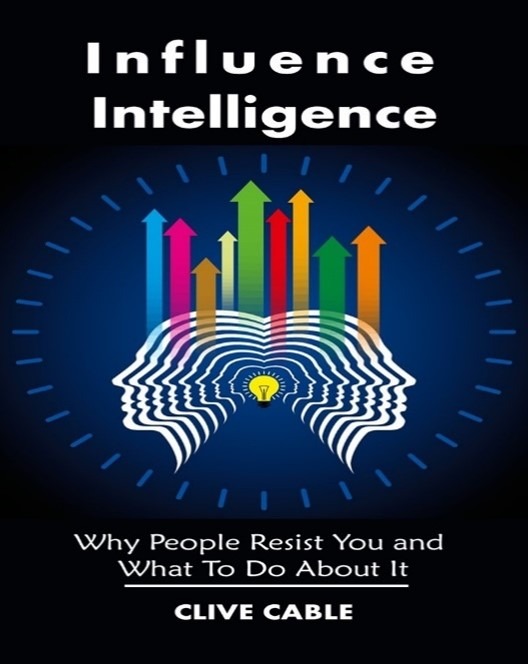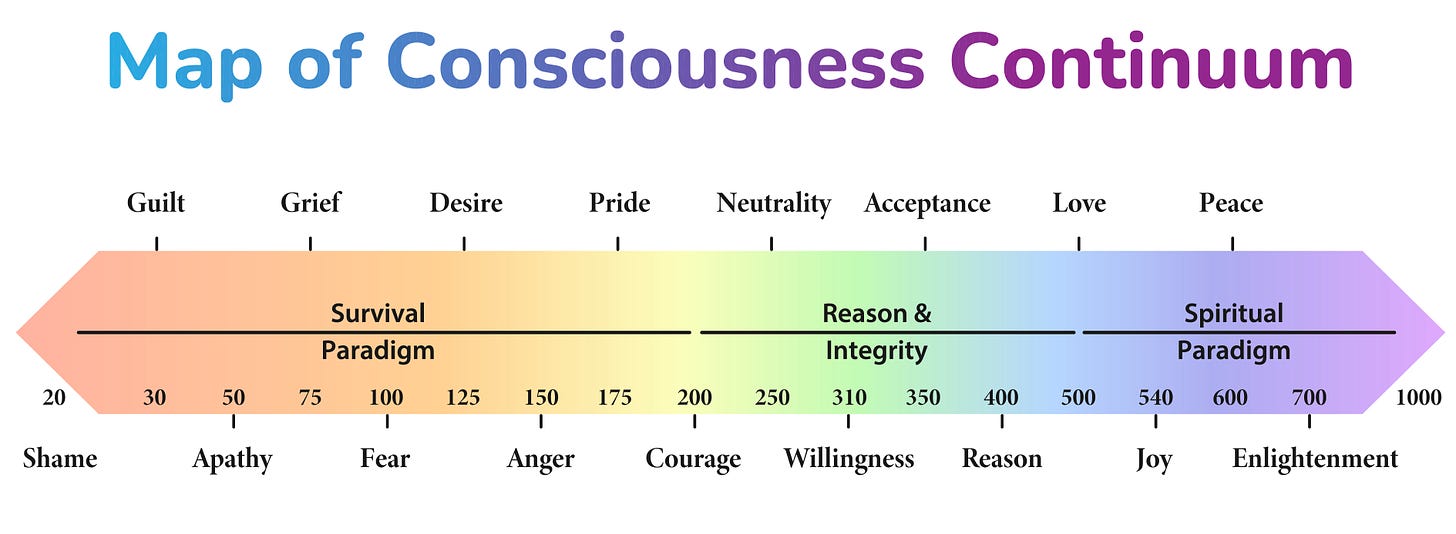All Tech Businesses Need Clients.
But Most Get it Wrong.
You’ve probably heard that the key to attracting clients is having a great product or service.
But according to recent studies in behavioural economics, that’s not the full story.
The real issue is actually what I call the “Invisible Opportunity Window.”
And what I’m about to show you can help you tap into a stream of eager clients before your competition even knows they exist.
Let me explain…
Imagine your potential clients are like seeds in a garden.
Traditional marketing waits for these seeds to sprout before trying to nurture them.
But what if you could identify and nurture these seeds before they even break through the soil?
When you’re stuck in reactive marketing, you’re always playing catch-up, scrambling to grab attention in a crowded marketplace.
But when you can predict and prepare for client needs before they arise, you’re the first and often only option they consider.
Now, some people may argue that social media advertising or content marketing can address this problem.
However, these methods still rely on prospects actively searching for solutions or stumbling upon your content.
They don’t truly solve the underlying issue of timing and predictive engagement.
Luckily, there’s a way to address this underlying issue and give you the client acquisition breakthrough you’ve been dreaming of.
It’s what I call “Predictive Engagement Cultivation.”
This approach leverages cutting-edge AI and data analytics to identify potential clients at the earliest stages of need, allowing you to nurture relationships long before your competition even realizes an opportunity exists.
Studies from the Harvard Business Review have shown that companies using predictive analytics in their marketing efforts see a 15-35% increase in conversion rates.
And a recent report from Forrester Research found that businesses implementing AI-driven predictive engagement strategies experienced a 10% year-over-year increase in their lead-to-opportunity conversion rate.
But the benefits don’t stop there.
By cultivating relationships early, you’re not just acquiring clients – you’re building a loyal customer base.
A study by Bain & Company revealed that increasing customer retention rates by just 5% can increase profits by 25% to 95%.
Predictive Engagement Cultivation allows you to create these lasting relationships from the very beginning.
Think about it…
By addressing the Invisible Opportunity Window, you’re not just solving a marketing problem.
You’re changing your entire business model.
You’re moving from a reactive, feast-or-famine approach to a proactive, steady growth strategy.
You’re no longer at the mercy of market fluctuations or competitor actions. Instead, you’re in control, cultivating a garden of opportunities that bloom into profitable, long-term client relationships.
Isn’t it time you stopped waiting for clients to come to you and started nurturing your success before your competition even sees it coming?
If so, then your next step is obviously to get to know your idea buyers better.
In fact, you need get to know them better than they know themselves.
That way you can begin the Predictive Engagement Cultivation and be three steps ahead of your competition.
Those three steps are…
-
Knowing what problems your prospects have so you can accurately address them in your message.
-
Creating an offer so good that your future clients would feel stupid saying no.
-
Using the right words at the right time to the right people will get you all the high paying clients you’ll ever need without selling, persuading or influencing in any way.
Let me pull apart that last sentence.
People love to buy but hate to be sold.
In step one you discover how your potential clients think and feel.
Which means your message uses the words they use to convince themselves you’re the best choice.
The put it differently…
When you can articulate their problem better than they can they automatically believe you have the best solution.
If you say it – they doubt it.
If they say it – they believe it.
Watch the video below to get started.
Here’s what the experts say about Clive Cable…
“Clive is a one-off kind of person who has a remarkably deep knowledge and expertise surrounding web copywriting. I went on his seminar the other night and was amazed by his insight, ideas and practical tips on how to turn your website into a more effective selling machine.
I strongly recommend him.”
James SaleBest-selling Author of Mapping Motivation
“Clive has been teaching me very advanced skills of persuasion that allows me to maximize my sales and the response rates of my clients. I'm grateful Clive chose me to work with.”
Christine MarlowDirect Response Copywriter - Direct mail and lead gen specialist
“Clive Cable is one of the country’s smartest copywriters. His ability to come up with a unique angle on just about any topic amazes me. The term “creative genius” is often overused, but not with Clive. If you are looking for a talented copywriter or some smart marketing ideas for your business, Clive is your man!”
Barry DunlopSales turnaround expert at BarryDunlop.com
"The copywriting craftsman is a suiting moniker for Clive Cable as he is an absolute master with his words.
We've utilized Clive's unique mind on several occasions - whether it be bullet fascinations on a sales letter or the copy for a soap opera style email series - he always hits it out of the park! To be fair, "The Copywriting King" is a much more appropriate title for this man as he ALWAYS get's results.
The last time I hired Clive to assist with a landing page we saw a jump in subscriptions within 2 hours of going live.
Not to mention, each time we speak, I feel like I've gained years of knowledge just from our brief conversations.
Having access to such a highly skilled professional has proved to be an invaluable asset to my business.
My highest recommendation goes out to Clive Cable."
David Aston
Strategic Growth Strategist and team leader at Neil Patel Accel.

“Has an email ever saved your life?
Well, Clive’s email did save my life.
OK, maybe I’m a little too dramatic, but that’s how I felt when I received his email asking me if I needed help getting clients.
I had been working for months without being able to land my first gig.
When he received my desperate cry for help, he scheduled a call on Skype and little did I know it was the beginning of my successful career.
He gave me some precious advice on how to improve my copywriting (which worked great because you’re still reading) and I was able to sign my first contract a week later.
What makes it special working with Clive is, he doesn’t just give you the course and leaves you on your own. He guides you through and makes sure you apply it AND get your dream results.
If quality is your keyword, then Clive is the person you are looking for.”
Barinthia Scarlett.
Digital Marketing Strategist and copywriter.

“As a conversion rate optimization consultant, I often need someone to work with who can help me produce web copy that converts. I have worked with Clive on several occasions now, and he never fails to deliver.
Once, I referred a client to him (an internet marketer with a well-known product) and Clive was able to create the video sales copy within two days. When I read the copy it was absolutely spot-on – the language was uncomplicated, the copy was concise and very compelling.
What I most appreciate about Clive as a copywriter is the fact that he really takes the needed time to understand your market and your audience. Well that and the fact that he’s always learning about marketing, copywriting, salesmanship, business, always improving himself and his craft.
When I need any help with copywriting, it’s very reassuring to know that Clive is on my speed dial (and you should, too)!
Saying all this though, I don’t just vouch for Clive’s copywriting skills. As long as I have known Clive, I have witnessed him generously and selflessly give his time, his knowledge, skills, insights, leadership, wisdom and experience to anybody who asks for it.
Trustworthy, generous, caring, authentic and reliable, Clive has become a colleague, a mentor, a coach and a treasured friend to me and other entrepreneurs in our mastermind circle. If you need copywriting help, highly recommend you work with Clive.”
Marj Galangco
Copywriter. Content Marketer and digital marketing strategist.
"Simply put, Clive is a first-rate master copywriter. The way he creatively crafts his words on paper (or the screen) draws people's attention in and gets results! Clive's talents go well beyond writing too - as he is a student of many subject matters and has studied under many of the great marketers, speakers and copywriters. Plus, Clive is a witty, sharp, and kind man to boot! I recommend you speaking with Clive about what he can offer you and your company - you'll no doubt glean new knowledge during the process! :)"
Bethany SplideEntrepreneur, visionary former pro athlete
"Clive has an encyclopaedic knowledge of copywriting and marketing.
Ivor MurrayOwner Meditations Ltd
He is generous with his time and experience and is always willing to help and advise. I have worked with Clive on several projects and have found him to be reliable, enthusiastic and professional in his approach."
“When I received an email promoting a copywriting class with Clive Cable, I was intrigued. But I wondered if the time and money would be worth it. In the end, I looked at it as an investment to increase my value to my clients and my business. So I took the plunge. I was not disappointed. Far from it. Clive’s insights went far beyond the “benefits vs. features” tactics common to most copywriting instruction. We delved into new areas of study that I never even knew existed. Now I’m using them to my advantage every day. He was also generous with his time, knowledge and resources. I still can’t believe how many copywriting secrets he shared. Bottom line: Clive delivers. If you study with him -- or even just take his advice -- be prepared to enjoy your new smarts, savvy and skill.”
Laima RastikisLaima Rastikis Writing for Business & Government. Online Content. Marketing Communication Strategy. Project Management.
“Clive Cable is a master of persuasion.
Kevin DawsonKevin Dawson Copy Chief. Financial Copywriter. And email marketing manager for brands doing $700k - $2 million annually.
The first thing I read from Clive had me racing down the page in excitement, glued to every word... and I found myself clicking the order button, not fully aware until after I hit the order page. Clearly, I needed to know what made Clive's effective Jedi Mind Tricks so influential.
And that journey of discovery has changed my life.
They've boosted my income.
And opened my eyes to aspects of human nature I never imagined existed.
Clive is an impressive man. His writing will make you money. If you need to sell anything, Clive Cable is your guy.”
“This guy's a complete star when it comes to explaining how to write effective copy for Direct Response marketing, E-mail marketing and Web marketing! It is quite staggering who he has studied and what he has achieved in this field. After each of our sessions I was completely blown away!
Adrian StephensonFreelance PPC and maestro of creating profitable Pay Per Click marketing campaigns.
Thoroughly recommended!!!!!!!!!!!












